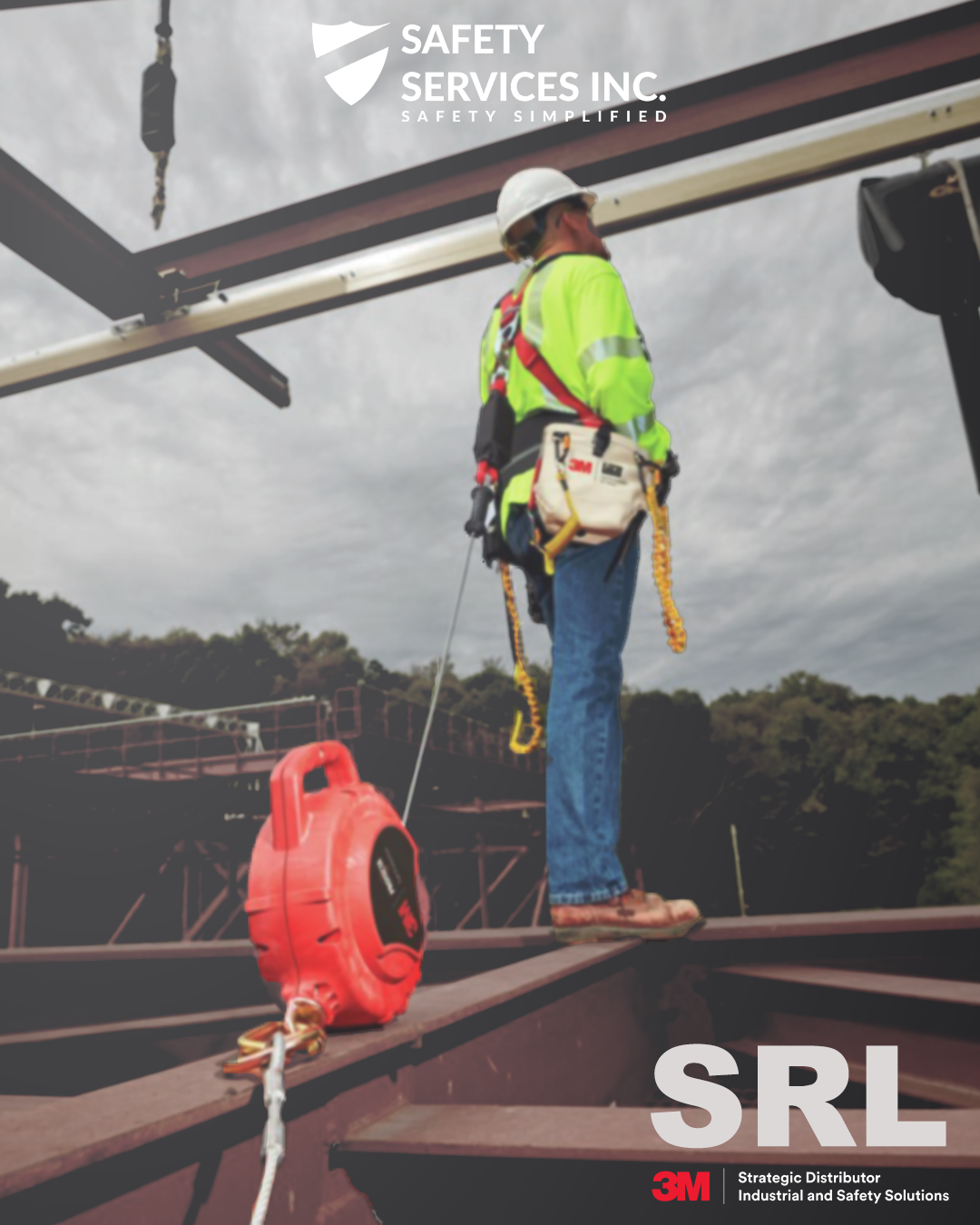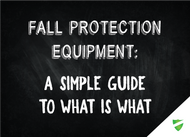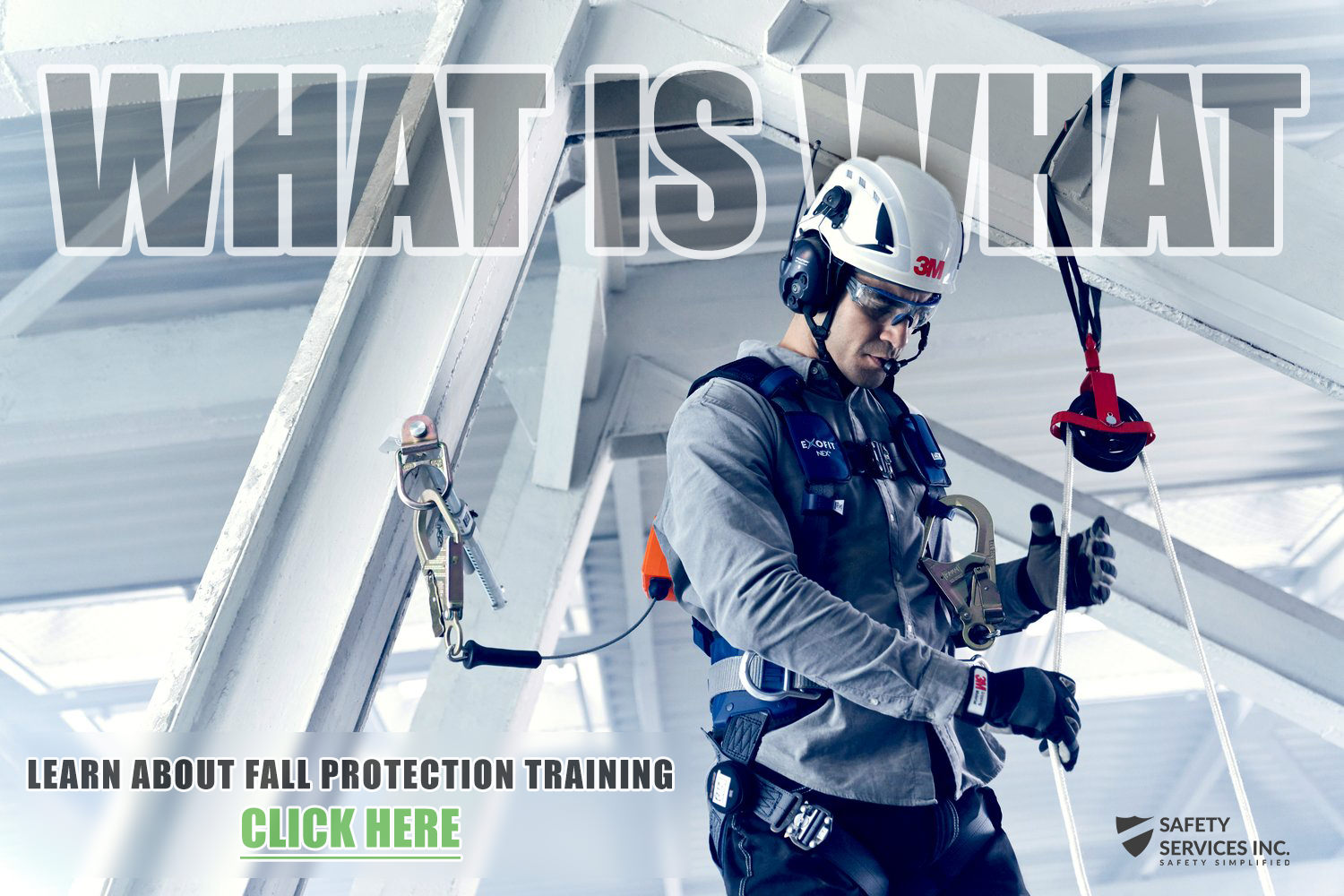If your employees are elevated more than four feet in the air, or if they work near hazardous materials, you are required to protect them from falls - period. Figuring out exactly how to do that can feel like a formidable challenge, but thankfully, there is plenty of industry standard equipment available to you. Take a walk with us through the world of fall protection equipment; we promise that we’ll catch you if you lose your mental footing.
Fall arrest systems
Fallarrest systems consist of a body harness, anchorage, and connector that work together to catch an employee in the event of a fall. The equipment looks and acts similar to what you might wear at an indoor rock climbing class. Fall arrest systems are designed to allow you to fall up to 6 feet, but the equipment catches you before you hit a lower surface. Because the equipment does allow for a short distance fall, employees have more freedom of movement, especially when walking on a narrow surface, like a construction beam.
Positioning systems
Positioning systems are similarly composed of a set of connectors that attach to a body harness or body belt, but they are configured in a way that allows for labor on vertical surfaces with both hands free. They are ideal for someone who is doing elevated work on telephone poles or windows, and even helpful for those of us trying to figure out how to paint their two story living room. While using a positioning system, workers will be leaned back away from the vertical surface, as the equipment cradles them, almost like a swing. The system activates once an employee falls, but it will stop the free fall within 2 feet.
Travel restraining systems
Unlike fall arrest and positioning systems, travel restraint systems eliminate the possibility of a fall by stopping employees before they step off the edge of their working surface. When using a travel restraining system, one end of a lifeline (a flexible rope) will attach to a worker’s body harness, while the other is secured to an anchorage point. It’s kind of like those leash backpacks you tried out on your toddlers, except in this case, the anchor is much stronger (and less frustrated) than you. Travel restraint systems are ideal for roofers or construction workers who must be near unsecured edges.

The components of fall protection
Anchorages
Just like a boat anchor secures a ship from drifting away, fall protection anchors must support an employee to reduce the risk of a fall. Anchors attach to an employee’s fall arrest system, and they must be able to hold a lot of weight, in some cases up to 5,000 pounds per worker attached. It’s important to place anchors as high up as possible, so that an employee has room to safely fall before the system activates.
Body Harnesses
Body harnesses are one of the most important pieces of fall protection equipment. It is essential that harnesses fit properly, not only to avoid your workers feeling silly, but to ensure that they will truly be protected in the event of fall. Body harnesses wrap around the shoulders, waist, and legs of a person to evenly distribute weight and avoid pressure on major arteries. Harnesses come equipped with a D-ring, which looks like a giant pop can tab. Whether the D-ring is locate on the front, back, shoulders, or hips area of the body harness determines the specific type and use of the harness.
Connectors
Anchorage connectors are just what they sound like – devices that attach fall arrest equipment to an anchor. Just like the anchorages, anchorage connectors must also be incredibly strong and able to hold upwards of 5,000 pounds. There are many types of connectors, including self-retracting lifelines, shock-absorbing lanyards, and winches. All connectors fall into three main categories, which differ based on their intended use.
- Type A – These connecters are the most common and are designed for an active fall. The anchors must be able to hold a minimum of 5,000 pounds.
- Type T – These connectors are also designed for an active fall and must be able to support a minimum of 5,000 pounds, but they also have the ability to be used with tie-back anchors or suspension.
- Type D – These connectors must support between 2,700 and 5,000 pounds of weight, and they absorb more energy in a fall by allowing more movement.
Descent and rescue
There may come a point where an employee requires rescuing after a fall. In most cases, the fallen employee will save face by climbing back up to their starting point, but if they are unconscious or need assistance, a rescue and descent device can be used. Automatic descent devices, which usually operate by turning a wheel, require the least amount of training but are not suitable for every situation. User controlled ascent devices come into play when a co-worker descends to the fallen employee, connects to their fall arrest system, and then descends with them to a lower level. Employees who utilize this method must be fully trained to do so.
Do you still have questions?
Safety Services, Inc. has been supplying businesses with protective equipment and supplies since 1948. Our employees are passionate about helping you determine the best fit for your employees.
Contact us today to learn how we can help ensure your workers’ safety at heights.


